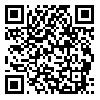BibTeX | RIS | EndNote | Medlars | ProCite | Reference Manager | RefWorks
Send citation to:
URL: http://irj.uswr.ac.ir/article-1-518-en.html

 , Roshanak Vameghi *2
, Roshanak Vameghi *2 
 , Nikta Hatamizadeh3
, Nikta Hatamizadeh3 
 , Enayatollah Bakhshi4
, Enayatollah Bakhshi4 
 , Seyed Mohammad Mousavi Khatat5
, Seyed Mohammad Mousavi Khatat5 

2- Pediatric Neurorehabilitation Research Center, University of Social Welfare and Rehabilitation Sciences, Tehran, Iran.
3- Pediatric Neurorehabilitation Research Center, Department of Rehabilitation Management, University of Social Welfare and Rehabilitation Sciences, Tehran, Iran.
4- Department of Biostatistics, University of Social Welfare and Rehabilitation Sciences. Tehran, Iran.
5- University of Social Welfare and Rehabilitation Sciences, Tehran, Iran.
Objectives: The aim of this research was to assess the level of awareness of rehabilitation professionals employed in academic rehabilitation centers in Tehran with reference to Tele-rehabilitation technology.
Methods: In this study, a descriptive cross-sectional research method was used. The research was implemented by using a researcher-designed questionnaire which was developed by the integration and cultural adaptation of different tools collected in the field of tele-health implementation feasibility. The content and face validity of the questionnaire was determined and approved by Lawsche’s method. The reliability of the questionnaire was assessed by test-retest correlation coefficient determinations. After considering the inclusion and exclusion criteria, informed consent was obtained, and the questionnaires were distributed among the study sample, which comprised of 141 rehabilitation professionals.
Results: The findings show that a desirable level of awareness does not exist among rehabilitation professionals with regards to this technology. Based upon the results, only 8% of the participants had basic knowledge of this technology required in case of implementation.
Discussion: Since rehabilitation professionals’ awareness and knowledge can be a major key to a better implementation and application of this technology, it seems that there is a need for some developmental and training programs, such as informative educational workshops and seminars, to help them improve their level of knowledge and awareness.
Received: 2015/03/12 | Accepted: 2015/05/10 | Published: 2015/06/1



